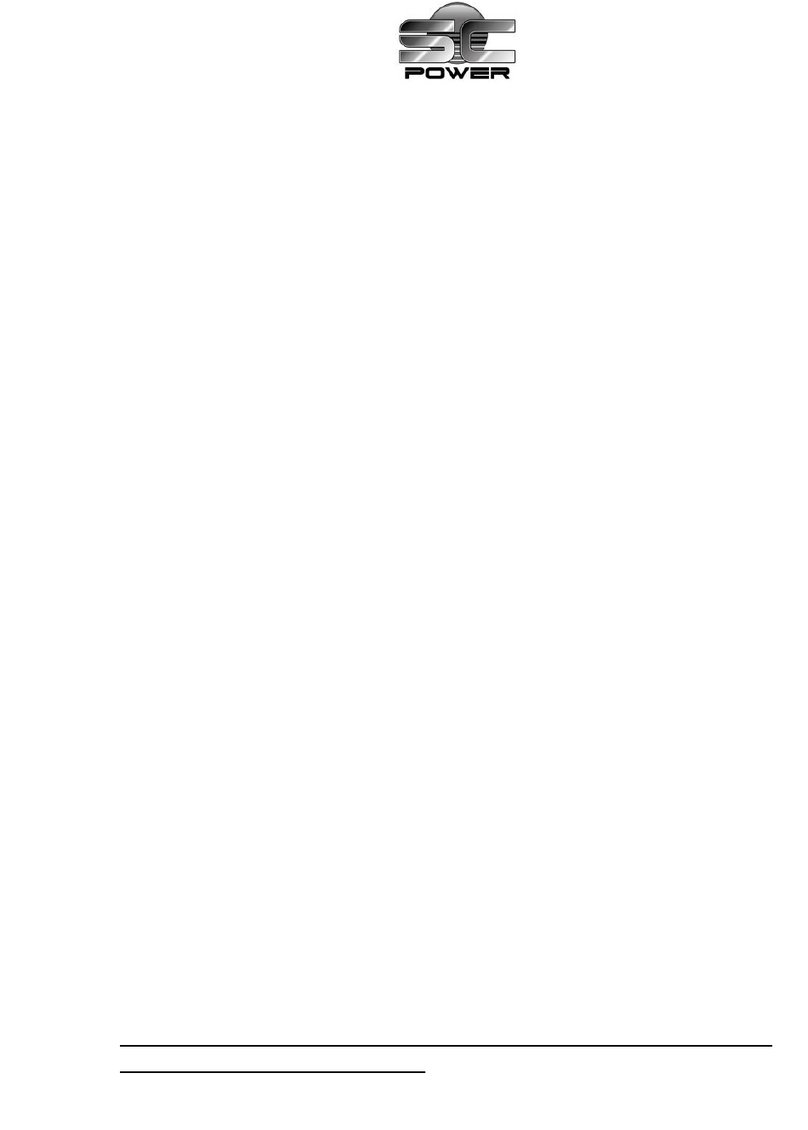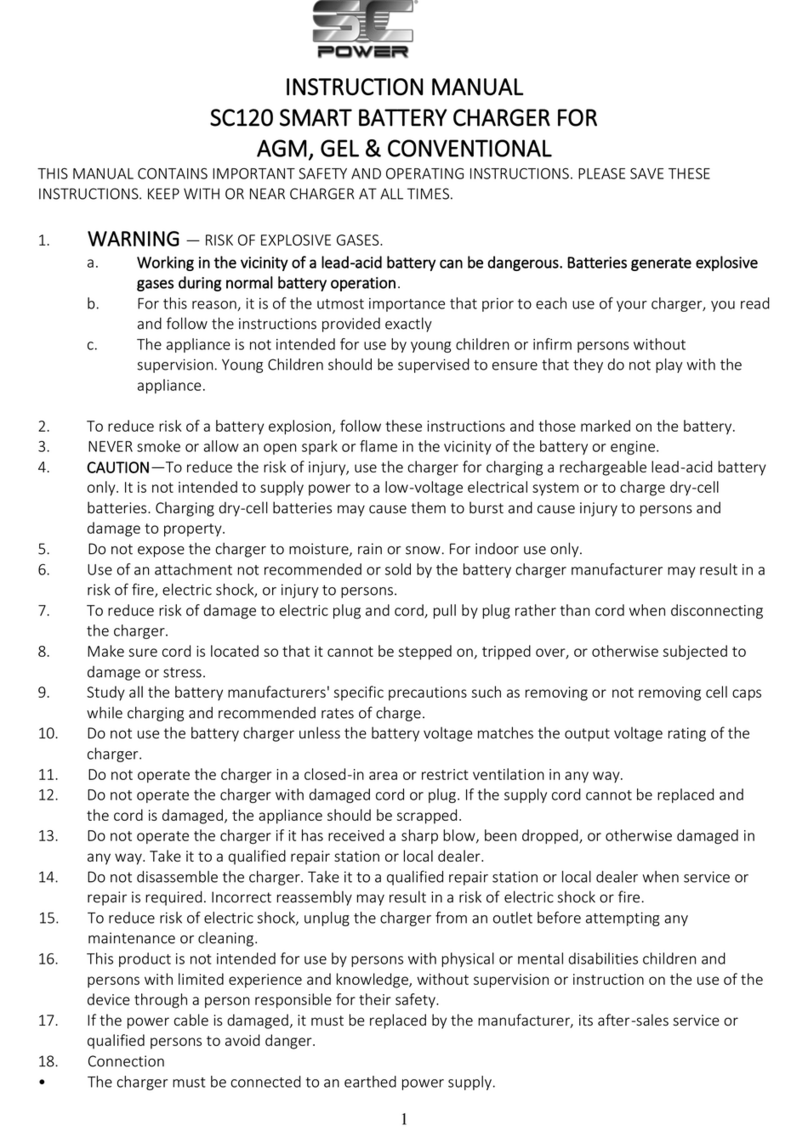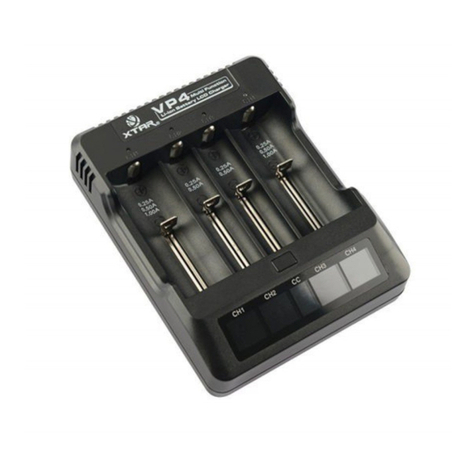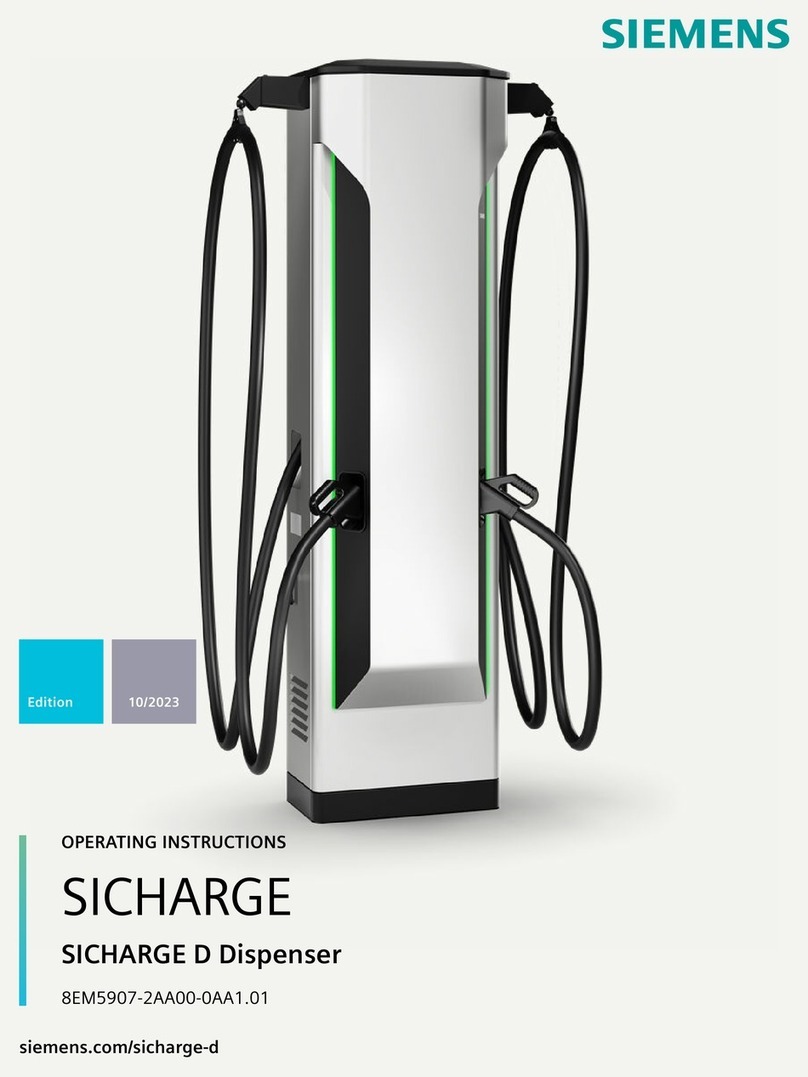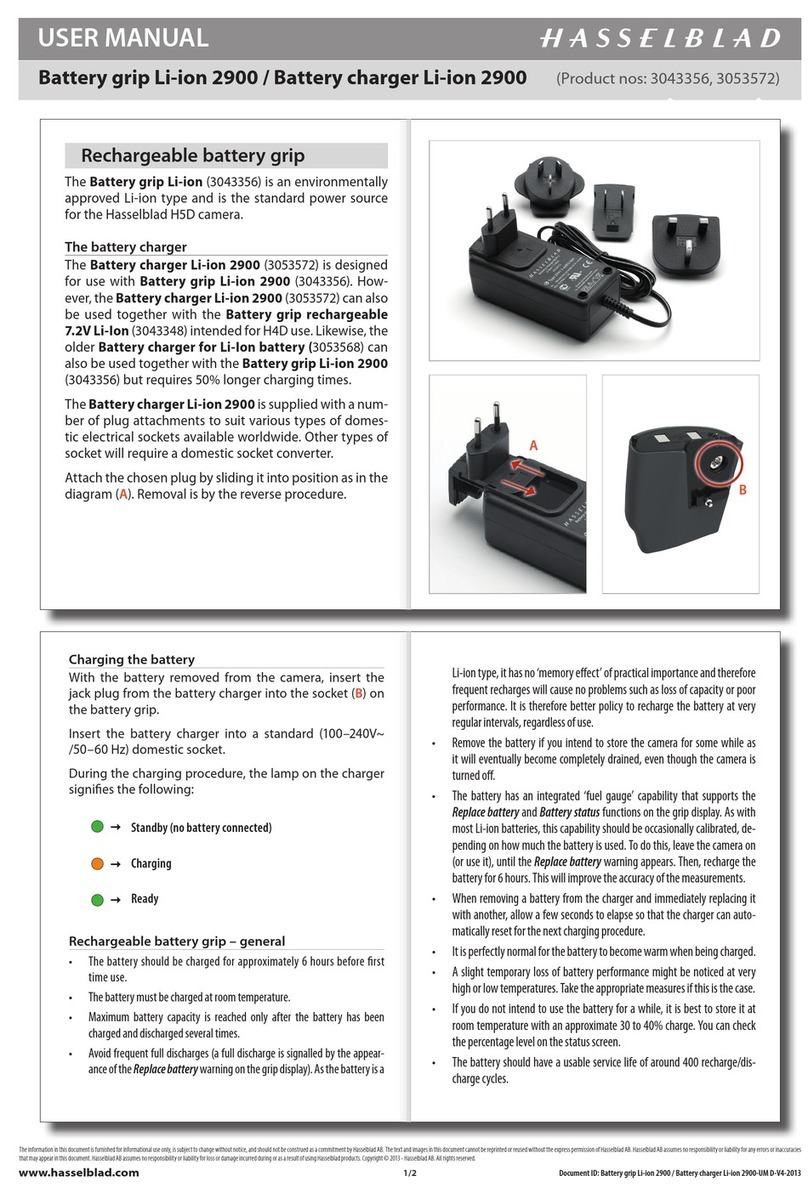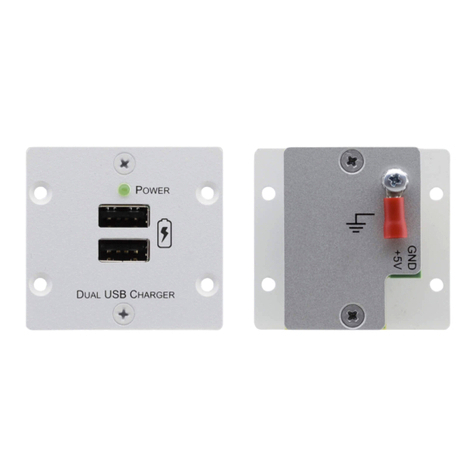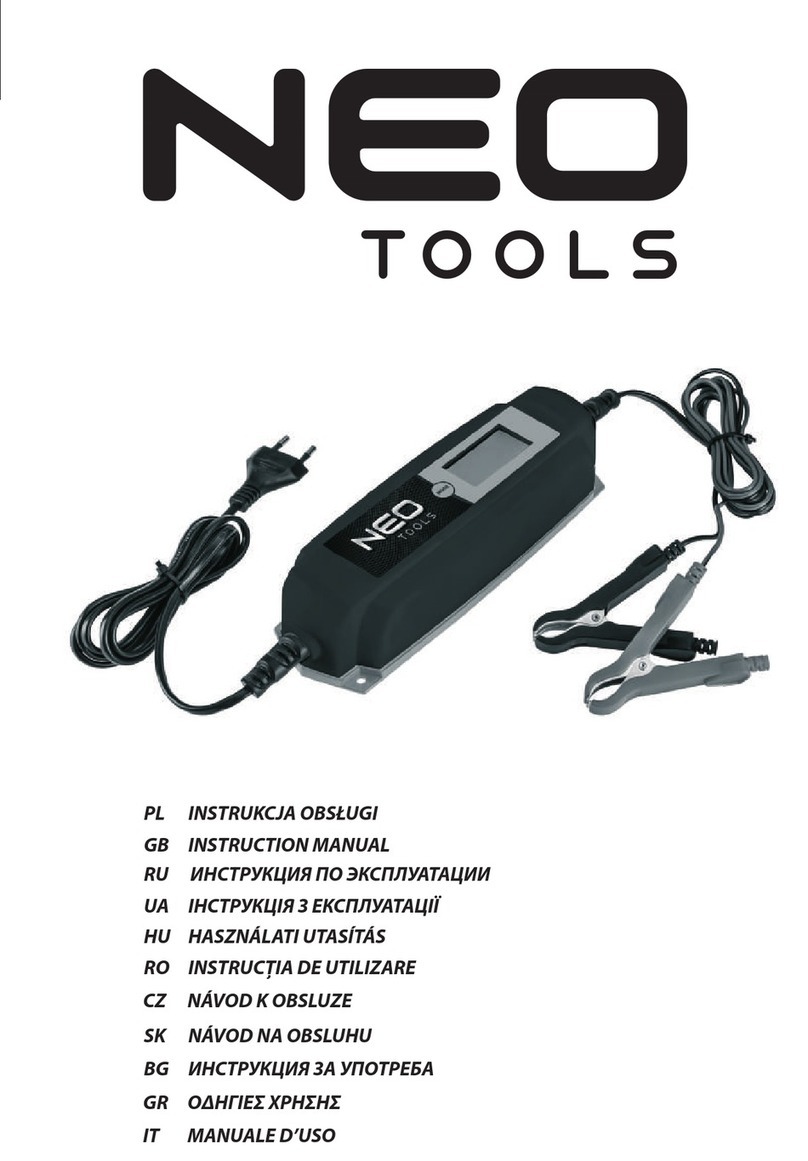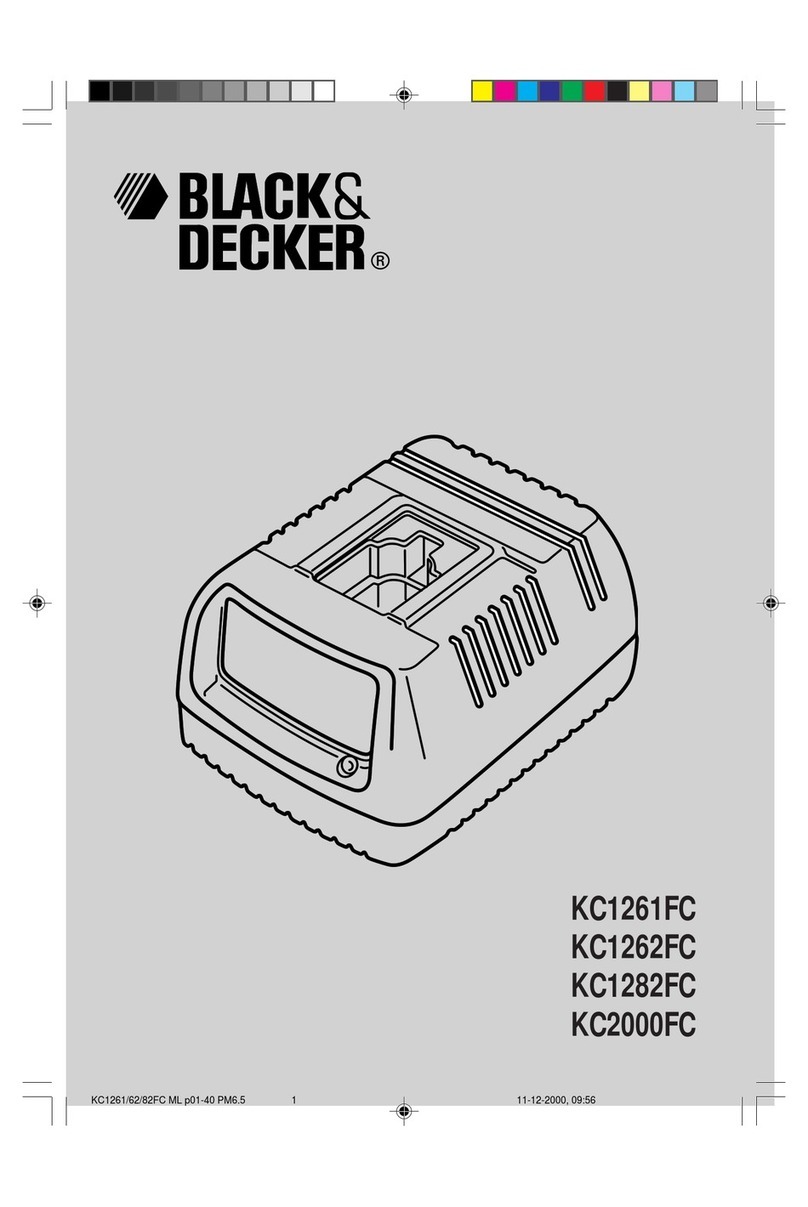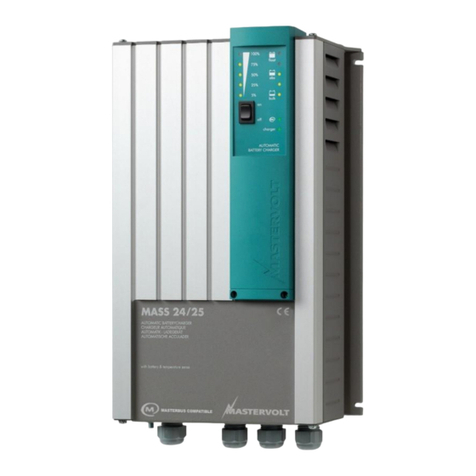SC POWER SCZ60 User manual

INSTRUCTION MANUAL
ELECTRONIC SMART CHARGER 6V / 12V 6A
CHARGER SCZ60
GENERAL SAFETY
This manual contains operating guidelines and important safety procedures. Please read this user
manual carefully before using the charger and keep in a safe place for future reference.
Use charger in a safe well-ventilated environment that is clear of corrosive or explosive chemicals,
ammable liquids or gases. Keep charger and battery away from sources of ignition as a charging
battery produces explosive gases. It is recommended that safety goggles be worn.
Check charger for general condition and ensure that cables, input/output leads, plugs and crocodile
clips are not damaged in any way. Never use a charger that is damaged and never attempt to carry
out repairs to a damaged charger.
Charger should only be used by a responsible and competent adult.
WARNINGS
This device may be used by children at least 8 years of age and by persons with reduced physical,
sensory or mental capacities or without experience or knowledge if they are properly supervised or if
they have been given instructions on the safe use of the appliance and if the risk involved has been
apprehended.
Children are not allowed to play with this device
Cleaning and maintenance by user should not be carried out by children without supervision of an adult.
If the power cable is damaged, it must be replaced by the manufacturer, its after-sales service or
persons with similar qualications in order to avoid a danger.
Do not attempt to start the vehicle with the charger connected to the battery.
Do not attempt to charge a non-rechargeable battery.
Do not use this charger to charge dry cell batteries.
Do not attempt to charge a frozen battery.
Only lead/acid (conventional, SLI, SMF, Gel and AGM) batteries (6-12V/3Ah to 6-12V/140Ah) should
be charged.
Charger should not be used as a continuous source of power.
Only use cables that are provided with this charger.
Do not use this battery charger if the mains lead or plug is damaged.
Do not use this battery charger if the output leads or crocodile clips are damaged.
Do not use this battery charger if it has been dropped or damaged in any way.
Turn off mains power supply before disconnecting charger from battery.
Avoid contact with battery acid and wash immediately with water if acid does come into contact with
skin or eyes.
Wear safety goggles and protective clothing to offer protection from acid and electrolyte.
Do not attempt to clean charger with cleaning solvents, use only a clean cloth or tissue.
Do not smoke near battery and ensure adequate ventilation.
Do not cover charger during operation and disconnect from mains when not in use. Disconnect charger
if battery heats up excessively or if leaks from the battery appear. When charging battery never allow
battery terminals to be connected by any means.
Remove all metal objects (rings, bracelets etc.) when handling battery charger to avoid short circuits
and resultant burns.

DISPOSAL
In the event that this product must be disposed of, an authorized place for the recycling of electrical
and electronic appliances must be sought. Contact your local authority for information concerning
local Household Recycling Centres with applicable facilities.
This product must not be disposed of with general domestic waste.
BATTERY CHARGING INSTRUCTIONS
Please read your vehicle manufacturer’s instructions for further information and advice regarding
the disconnection of the battery for charging purposes.
IMPORTANT: This model will only charge a 12 volt or 6V battery
with a minimum residual voltage of 2 volts. If the residual voltage is
lower than above gures, the charger will not operate.
Batteries store large amounts of energy. Avoid short circuits which could result in a dangerous
electrical discharge that could result in personal injury and / or damage to equipment and property.
The charger will diagnose the condition of your battery.
1. PREPARATION OF THE BATTERY
In the case of non-sealed lead-acid batteries, rstly remove the caps from each cell and check the
level of liquid. If it is below the recommended level, top up with ionized or distilled water.
UNDER NO CIRCUMSTANCES SHOULD TAP WATER BE USED
To avoid battery acid splashing, the cell caps should be replaced but not tightened until charging is
complete. This allows any gases formed during charging to escape. It is inevitable that some minor
escape of acid will occur during charging. If your battery is permanently sealed it is unnecessary to
carry out these checks.
2. CHARGING LEAD SELECTION
Interchangeable ring terminal and fully-insulated battery clip charging leads are supplied. Select
the appropriate lead for your application and attach to the charger output lead using the quick t
connectors tted to each, before connecting the charger to either the mains supply or battery.
3. CONNECTION
To avoid sparks which could cause an explosion, the mains supply should always be disconnected
before making or breaking battery connections. Connect the battery clips or ring terminals to the
battery in the following order:
1. Connect the positive charging lead (RED) to the positive post of the battery (marked + / +ve or P).
2. For vehicles with the battery still installed: Connect the negative charging lead (BLACK) to the
vehicle chassis (marked - / -ve or N), well away from the battery, fuel line, and hot or moving parts.
For batteries removed from the vehicle: Connect the negative charging lead (BLACK) to the
negative post of the battery (marked - / -ve or N).
After connecting the clips, rotate them slightly so as to remove any dirt or oxidization, thus ensuring
a good contact.
3. Connect the charger to the wall socket.
4. Press the “MODE” button to select charging program. Settings are made by pressing the
“MODE-button” and stepping forward by pressing the button one step at a time, releasing the
button when the required mode is reached.

Stop charging at any time by pressing Mode button to get back to standby model.
When disconnecting charger, disconnect AC cord rst, remove clip from vehicle chassis, and then
remove clip from battery terminal. Do not charge the battery while the engine is operating.
4. BATTERY TYPES AND SETTING
WARNING! DO NOT ATTEMPT TO START THE VEHICLE WITH THE CHARGER CONNECTED.
THIS MAY DAMAGE YOUR BATTERY CHARGER.
MODE To select charging mode or re-set during charging.
12V Slow mode: 14.4V/2A
12V Fast mode: 14.4V/6A
/AGM
Winter mode or AGM or EFB batteries: 14.7V/6A
This setting is recommended for batteries at temperatures below 5°C. It is
also recommended for many AGM or EFB batteries.
6V mode: 7.2V/2A
Charging status indicator
This column will show charging status. It will be moving during charging and
stop moving after battery is full.
No Connection - Loose Connection
Reverse Polarity
Please check whether clamps are connected properly or correctly.
Bad Battery:
The battery is in bad condition and may need to be replaced
Voltage too high
You may choose the wrong voltage, for example, you may charging a 12V
battery with 6V mode or a 24V battery with 12V mode
Temperature High
5. WHEN CHARGING IS COMPLETE
Switch off the mains supply, unplug the charger and disconnect the clips from the battery, negative
(BLACK lead) rst.
NOTE : the ring terminal charging lead can be permanently attached to a vehicle battery. The lead
end-cap must be tted to prevent short circuit or dirt / water entry.
For non-sealed lead-acid batteries: Inspect the liquid levels in each cell and top up if necessary,
using the correct uid. Now push home or tighten the caps. Any surplus uid around the cell tops
should be wiped off (this should be done with extreme care as it is acidic). If the battery has been
removed for charging, replace it and re-connect the cables.

6. SPECIFICATIONS
Model No : SCZ60
Rated Input Voltage : 220-240 V, 50 Hz
Rated Input Current : 0.65 A
Charging Current : 6V/2A – 12V/2A or 6A
Start Voltage : 2V
Charger Type : 6 steps charging cycle
Battery Type : All types of 6V/12V lead acid batteries (Flooded, AGM,
EFB, GEL, MF
Operating temperature : -20°C to +45°C
Insulation Class : IP65
CAR BATTERY MAINTENANCE
It is essential to keep your battery regularly charged up throughout the year, especially during the
winter months. In the winter the effectiveness of your car battery is reduced by the cold. Oil is thick,
engines are difcult to start and the heater, windscreen wipers and lights are all draining power. It is
at this time that batteries have to be at peak power. If your battery is not regularly maintained and
kept fully charged, it can cause problems and a possible breakdown.
DECLARATION OF CONFORMITY
We declare that this product conforms to the following standards EN60335-1, EN60335-2-29,
EN55014, EN61000, and the following Directives 73/23 CEE, 93/68 CEE, 2004/108/EC, 2002/95/
EC (ROHS).
IP65
Table of contents
Other SC POWER Batteries Charger manuals
Popular Batteries Charger manuals by other brands
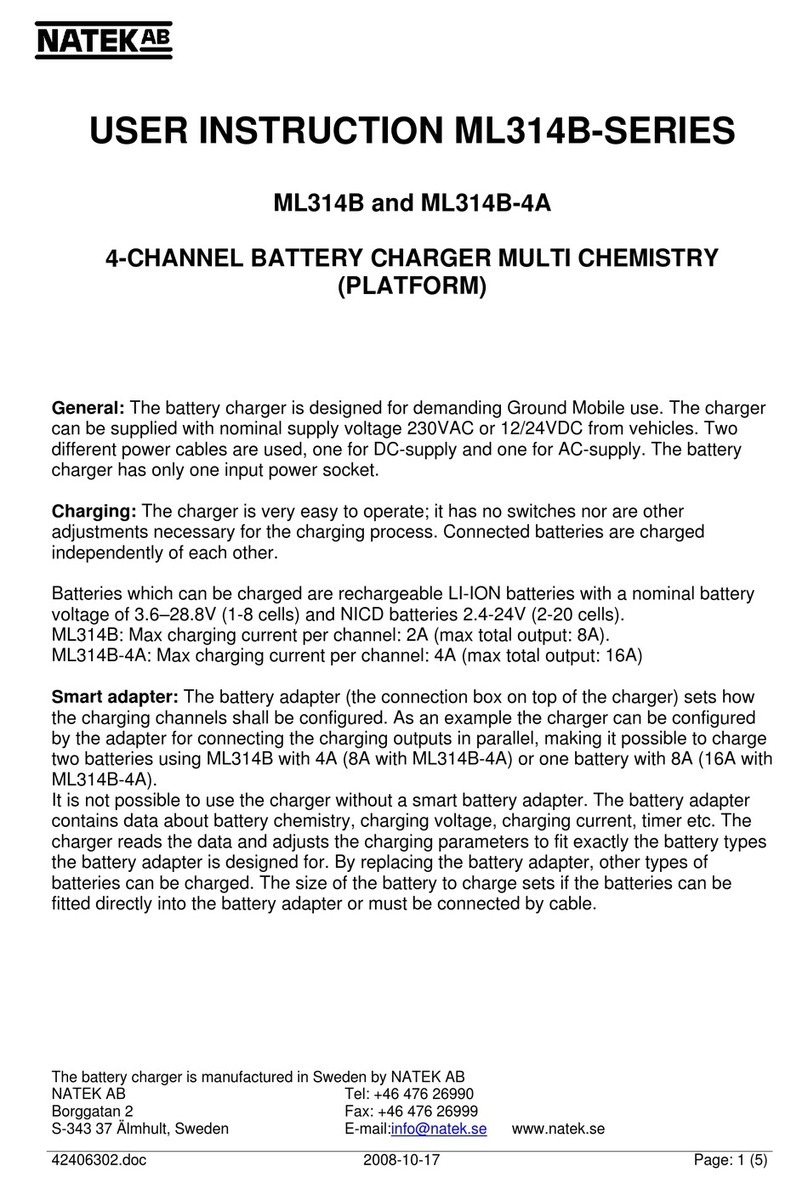
Natek
Natek ML314B User instruction
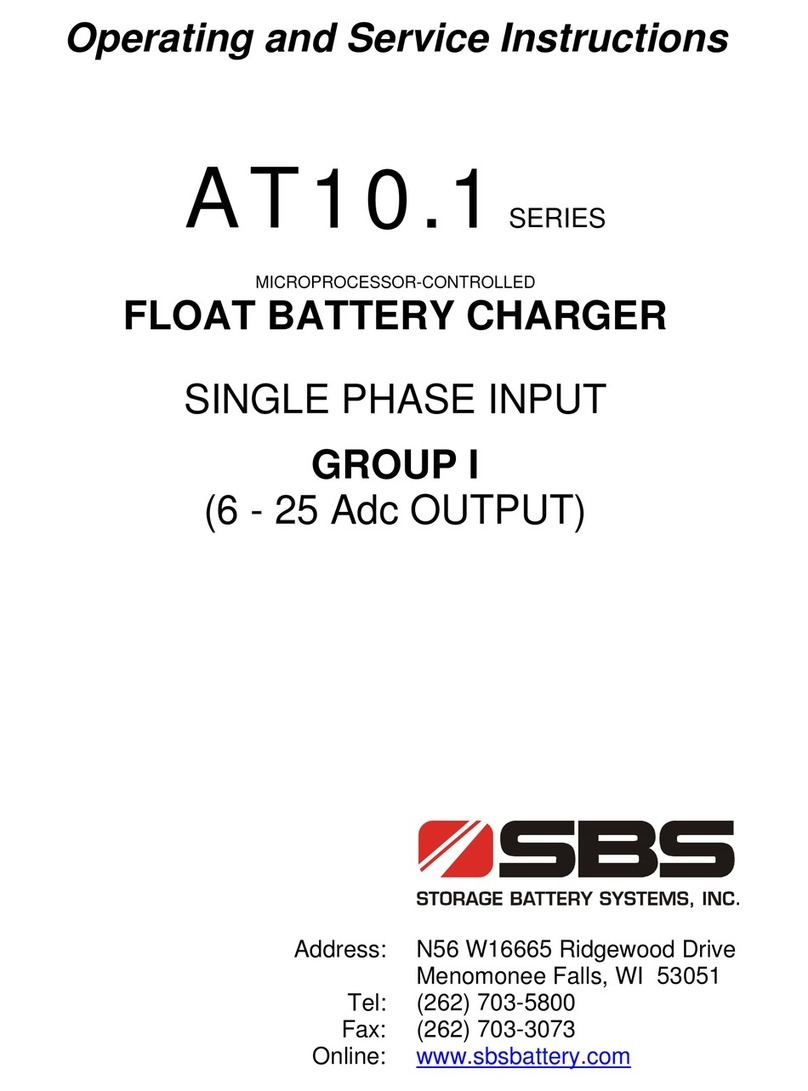
SBS
SBS AT10.1 SERIES Operating and service instructions
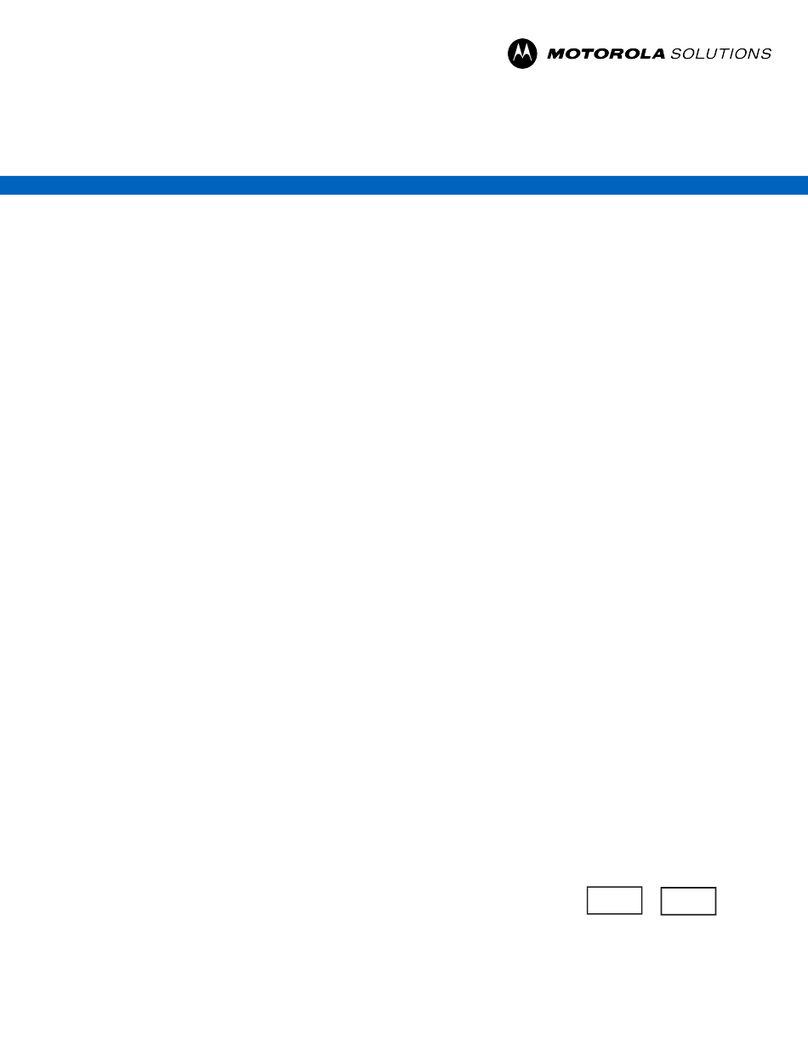
Motorola solutions
Motorola solutions WM800 user guide
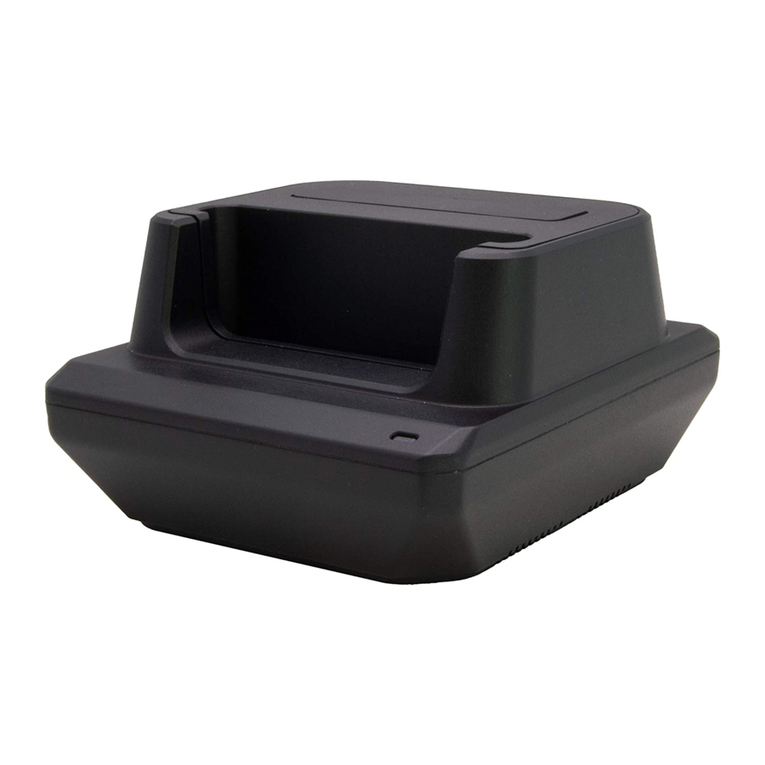
KoamTac
KoamTac XCover Pro OtterBox MINI-GUIDE

Panasonic
Panasonic FZ-VEBN111 operating instructions

Balmar
Balmar Centerfielder II Installation and operation manual
